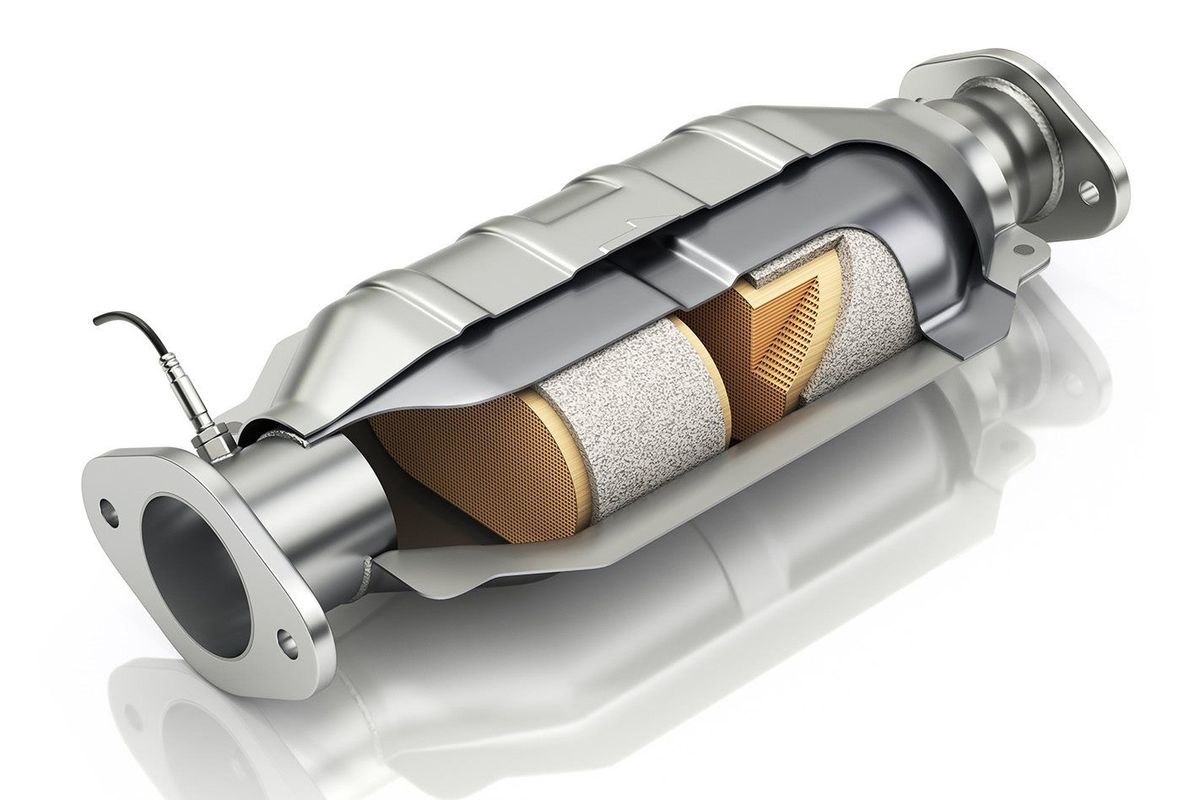Forget the Car - Crooks Busy Boosting Catalytic Converters

You wouldn’t leave a gold watch lying on the sidewalk. But you leave your car parked in plain sight on public streets all the time, its precious catalytic converter just hanging there waiting to be harvested by anyone with a hacksaw or wrench.
For a consumer with an older car or limited insurance coverage, a converter theft can spell disaster. Nick, of Palm Springs, California, said his older Toyota Prius was totaled after its converter was stolen. (The Prius is the most popular model among “cat” crooks. More on that later).
“Prius was parked in Riverside Drive, usual place in front of home. Started car to hear loud engine sputtering due to stolen catalytic converter. They are brazen to jack the car and cut-off catalytic converter in well-lit parking area. With ACs running loud all night, we can’t hear the noise,” he said in a Nextdoor posting.
Nick said that, like lots of people with older cars, he didn’t carry comprehensive insurance coverage and his insurer declared the car a total loss after the converter was stolen. (As an aside, he said he reported the theft when it happened and still hadn’t heard from the police three weeks later).
Not every incident is that severe but the cost to replace a stolen converter can easily exceed $1,000, according to Carfax. Anyone handy with tools can probably do the job themselves. Replacement converters cost between $500 and $1,000 for most common cars, Carfax said.
Quick and easy theft
It’s a growing problem and law enforcement officials, like Los Angeles County District Attorney George Gascón, say they need a little help from their friends in the automobile manufacturing business to get it under control.
Gascón is asking automobile manufacturers to work with him to explore creative solutions to address the rise in catalytic converter thefts.
“Catalytic converters are quick and easy to steal, and thieves can quickly turn them into cash,” Gascón said in a news release. “In addition, the lack of unique identifiers makes it virtually impossible to prove in court that a particular catalytic converter was stolen.”
“These thefts are costly to vehicle owners and result in higher insurance claims for us all,” Gascón said.
Why so popular?
Why is such a dowdy looking device so popular with thieves? It’s packed with precious metals including platinum, rhodium and palladium, that’s why. They can fetch up to $1,200 each. Onetime car thieves have come to look at cars as little more than wrappers for catalytic converters.
The things are mounted on the bottom of the car. Agile young converter boosters slide under the car on a darkened street, loosen a few bolts or saw the converter loose from the exhaust system and hotfoot it away in no time, police say.
The National Insurance Crime Bureau says converter thefts rose sharply as the Covid-19 pandemic took off. With offices closed, there was more cars parked on residential streets and, presumably, more crooks looking for a quick payoff.
The top five cities where insured thefts were reported were: Chicago (980), Sacramento (850), Los Angeles (550), Atlanta (407) and Indianapolis (353).
How catalytic converters work
From their perch between the engine and the muffler, the converters use precious metals like palladium, rhodium, and platinum as “catalysts” that create a chemical reaction to convert harmful exhaust gases into safer substances.
They’re usually placed closer to the engine than the muffler, helping them to heat up quickly, since they work most efficiently at higher temperatures. This is why your car emits so much pollution during the first few minutes it’s running – it takes a little while for the converter to heat up.
If you have one of the newer cars with a stop-start function that shuts the engine off at traffic lights and other intermediate stops, that’s why it doesn’t work for the first several minutes – the converter hasn’t fully heated up.
Catalytic converters began appearing on U.S. cars in 1975. They transform hydrocarbons, carbon dioxide, and nitrogen oxides – the bad stuff – into water vapor and carbon monoxide. If you live in Los Angeles or other cities basically built in a bowl you can thank your catalytic converter for largely eliminating the smog that used to blanket major urban areas.
Looking for help from manufacturers
Gascón argues that one solution to the theft problem would be to include an identifying token of some kind on each converter. That would make it easier to link theft suspects to specific stolen converters.
He has contacted four major auto manufacturers but said that so far only Honda has responded, saying it would be interested in exploring solutions. Honda’s U.S. division is based in Torrance, California, just a bit south of Los Angeles.
Protect your catalytic converter
Are there ways to avoid having your catalytic converter stolen? There are and the simplest is to keep your car in a locked garage whenever possible. Parking on a well-lighted street or parking lot sounds like a solution but a lot of people like Nick of Palm Springs will tell you that’s not enough.
There are other more pro-active measures – including a “converter cage.” This is just what it sounds like – a rebar enclosure that surrounds the converter, making it much more difficult to steal. There are also plates that can be mounted to the bottom of the car, completely covering the underside where the converter is located.
Muffler shops are beginning to advertise these solutions and they may be worth looking into, especially if you drive a Prius. It turns out the Prius is the most sought-after model among thieves.
Why? Well, as the first major-market hybrid, the Prius was built to be as environmentally neutral as possible. Toyota used the best metal to build the case, wanting to protect the converter against rust and wear-and-tear.
The company did just a good job that it has turned the Prius into a veritable magnet for converter thefts.
